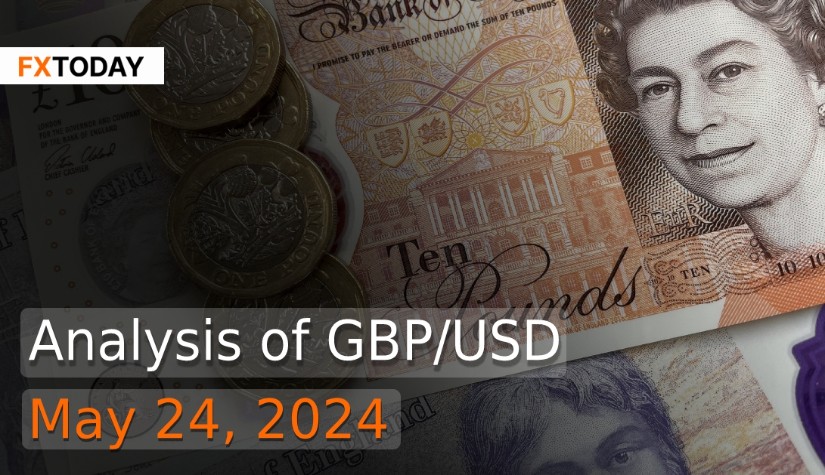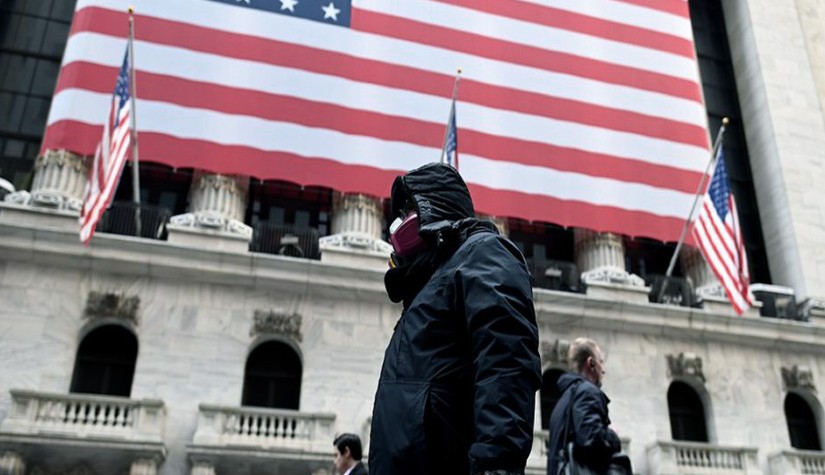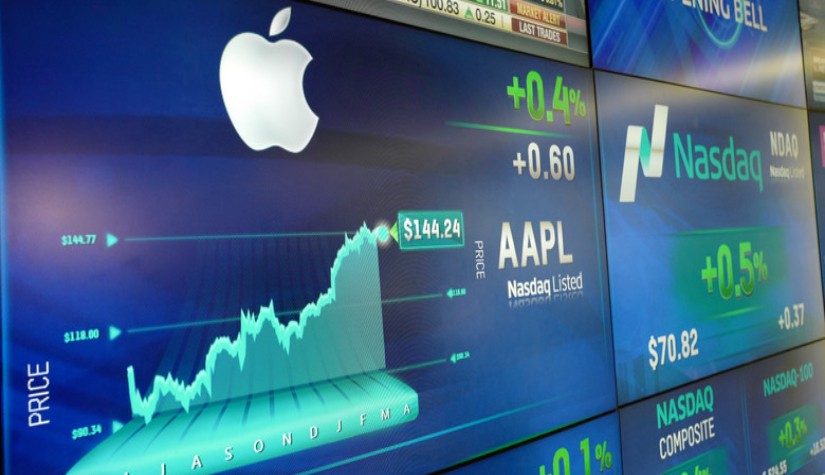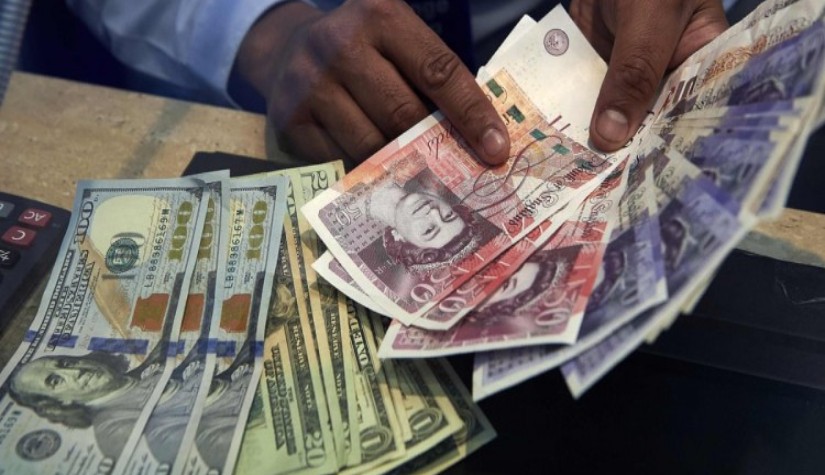UK Election Announcement Adds to Slight Economic Uncertainty
The British pound fell against the dollar after Prime Minister Rishi Sunak announced a surprise national election for July 4, diverging from the anticipated autumn schedule. Despite the unexpected timing, market reaction was minimal, with a slight increase in sterling options volatility. Current opinion polls predict a loss for the Conservatives after 14 years in power, with Labour likely to win, potentially forming a government without an absolute majority.
Market analysts believe that any minor fluctuations in the pound due to election campaign promises are unlikely to significantly alter its broader trajectory, which is more influenced by domestic economic data and central bank policies.
Recent UK services inflation data, showing a higher-than-expected rise of 5.9% in April, was more impactful than the election news. This led to reduced expectations for a Bank of England rate cut.
The inflation figures, particularly the higher services inflation, suggest limited room for the BoE to lower rates soon. Market expectations for easing have been adjusted, with only a modest reduction predicted by the end of the year. The overall market sentiment remains cautious, focusing on inflation trends and central bank actions rather than political developments.
A survey revealed that British employers offered pay increases averaging nearly 5% in the three months leading up to April. This sustained wage growth, a key factor in inflation, suggests it may not decline quickly. The Bank of England is monitoring wage data closely, with most policymakers preferring to see annual wage growth return to the 3-4% range, down from the recent 6%, before considering interest rate cuts.
Economic growth in the UK has slowed significantly this month, more than any economist predicted. The services sector, a major part of the economy, saw its weakest growth in six months, overshadowing a notable recovery in manufacturing, which experienced its best month in nearly two years.
However, British manufacturing orders saw their sharpest contraction since November, with expectations for future price increases also declining, according to a survey released on Tuesday. Meanwhile, home prices in Britain have reached record highs, despite the high cost of mortgages, though the rate of price increases has slowed, according to property website Rightmove.
On the other hand, the Bank of England (BoE) allocated £16.245 billion ($20.64 billion) in its weekly short-term repo operation, marking the highest usage since the facility's inception in October 2022. This facility aims to maintain money market rates near the BoE's official rate while the central bank reduces reserves through its quantitative tightening (QT) program. Governor Andrew Bailey highlighted the increased usage of the repo facility as a positive sign of the BoE’s robust liquidity management.
As speculation about UK interest rate cuts grows, the timing of the BoE’s balance sheet reduction remains uncertain. The rising use of the repo facility has raised concerns about liquidity in the banking system amidst ongoing bond sales. The BoE, similar to other central banks, is trying to balance rate management and downsizing its balance sheet to a sustainable level. So far, the QT process has been smooth, with the BoE reducing its balance sheet by over £200 billion to £760 billion, still significantly above pre-pandemic levels.
Major banks, including Goldman Sachs and Barclays, now view a June rate cut as unlikely following a smaller-than-expected drop in UK inflation. This has led Goldman to predict rate cuts starting in August, with a revised forecast of two cuts this year instead of three. Barclays maintains a cautious outlook, watching for further economic data to inform its forecasts.
The dollar rose on Thursday following data showing U.S. business activity reached a two-year high in May, indicating stronger economic growth midway through the second quarter. Additionally, unemployment claims dropped more than expected, signaling ongoing labor market strength. This pushed the dollar towards its largest weekly gain in six weeks, bolstered by robust U.S. economic data and a hawkish tone from the Federal Reserve's minutes.
Federal Reserve officials expressed cautious optimism about easing price pressures but noted potential for further rate hikes if inflation persists. Despite an annualized GDP growth of 1.6% in Q1, strong import demand weighed on the economy. While early Q2 data suggested some economic slowdown, business confidence remained high, though companies were wary of inflation, interest rates, geopolitical uncertainties, and the upcoming presidential election.
Manufacturers faced rising input costs, with the input prices index reaching a 1.5-year high, driven by higher prices for metals, chemicals, plastics, timber, energy, and labor. Services businesses also saw increased staffing costs, prompting them to raise selling prices to offset these expenses.
In the housing market, new single-family home sales fell more than expected in April due to rising mortgage rates and higher prices, indicating a loss of momentum in Q2. Additionally, existing home sales also dropped unexpectedly in April, further highlighting the sector's struggles despite strong residential investment in Q1. As a consequence, this could lead to the GBP/USD currency pair maintaining stability and fluctuating within the current range consistently, influenced by the yield rates and economic strength of both countries, which exhibit minimal disparity.
Data for Technical Analysis (30Min) CFD GBP/USD
Resistance : 1.2691, 1.2692, 1.2694
Support : 1.2687, 1.2686, 1.2684
30Min Outlook
Source: TradingView
Buy/Long 1 If the support at the price range 1.2682 - 1.2687 is touched, but the support at 1.2687 cannot be broken, the TP may be set around 1.2691 and the SL around 1.2679, or up to the risk appetite.
Buy/Long 2 If the resistance can be broken at the price range of 1.2691 - 1.2696, TP may be set around 1.2701 and SL around 1.2685, or up to the risk appetite.
Sell/Short 1 If the resistance at the price range 1.2691 - 1.2696 is touched, but the resistance 1.2691 cannot be broken, the TP may be set around 1.2686 and the SL around 1.2699, or up to the risk appetite.
Sell/Short 2 If the support can be broken at the price range of 1.2682 - 1.2687, TP may be set around 1.2677 and SL around 1.2693, or up to the risk appetite.
Pivot Points May 24, 2024 04:02AM GMT
|
Name
|
S3
|
S2
|
S1
|
Pivot Points
|
R1
|
R2
|
R3
|
|---|---|---|---|---|---|---|---|
| Classic | 1.2681 | 1.2684 | 1.2686 | 1.2689 | 1.2691 | 1.2694 | 1.2696 |
| Fibonacci | 1.2684 | 1.2686 | 1.2687 | 1.2689 | 1.2691 | 1.2692 | 1.2694 |
| Camarilla | 1.2687 | 1.2688 | 1.2688 | 1.2689 | 1.2689 | 1.2689 | 1.269 |
| Woodie's | 1.2681 | 1.2684 | 1.2686 | 1.2689 | 1.2691 | 1.2694 | 1.2696 |
| DeMark's | - | - | 1.2685 | 1.2689 | 1.269 | - | - |
Sources: Investing 1, Investing 2
















